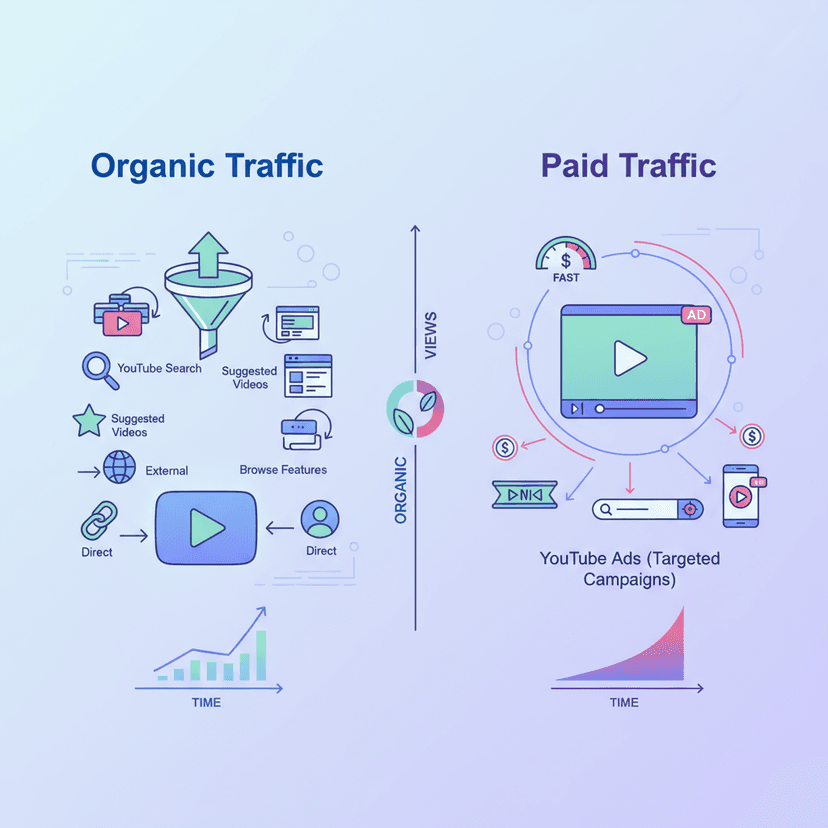In an era where online information searches play a vital role in consumer purchasing decisions, Google Ads remains a crucial tool for brands and marketers to reach their target audience. Recently, Google announced a major update for the Google Ads platform, focusing on developing search term matching systems and increasing brand control for advertisers. Let’s see what these changes are and how they will affect our online advertising strategies.
The Advancement of AI and the Development of Google Ads
Before we delve into the details of this update, it’s important to understand that Google is fully applying AI technology in the development of Google Search and the Google Ads algorithm. Over the past 6 months, improvements in AI language understanding, relevance, and quality have helped increase the efficiency of broad match for advertisers using Smart Bidding by as much as 10%.
4 Important Google Ads Updates
On June 26, 2024, Google launched four updates regarding Query Matching to improve search term matching and keyword brand control. Here’s a summary of what’s interesting!
1. New Recommendations for Brand Inclusion in Broad Match
Those familiar with Google Ads Search Terms know that Broad Match is one way to broaden your target audience. However, at the same time, the target audience may see ads unrelated to your brand, or in other words, competition may increase. Therefore, Google has developed the Brand Inclusion feature (formerly Brand Restrictions), which will make it easier for us to specify brand names that we want ads to appear when using Broad Match.
How to Use Brand Inclusion:
Caution: When you enable this feature, the system will automatically change the campaign settings to a Broad Match Campaign, along with updating the keywords in the campaign to be broad as well.
Citroën, a French car brand, used a Broad Match Campaign with Brand Inclusion as an example. The results were a 50% increase in conversions and a 35% decrease in Cost Per Lead.
2. Update Brand Exclusion in All Match Types and Dynamic Search Ads
While Brand Inclusion in Broad Match allows us to choose brands we want ads to appear for, Brand Exclusions is a feature that allows us to choose brands we don’t want ads to appear for. This applies to all keyword matching formats, including Dynamic Search Ads. Here are some recommendations for using the Brand Exclusion feature:
- If you want to do Broad Match but only want to show ads to certain brand traffic, you can use Brand Exclusion to limit traffic from those brand keywords.
- If you don’t want ads to appear with traffic from certain brands, use Brand Exclusion.
Caution: Using Brand Exclusion will block traffic from misspelled brand names. Therefore, we should monitor the impact on ad visibility and performance to avoid missing out on good conversion opportunities.
3. Increased Transparency in Search Terms Report
Google understands that misspellings are common in searches. Although Google Ads can match misspelled search terms with correct keywords (e.g., Yiutube with YouTube), search terms must pass the Privacy Threshold to appear in the Search Terms Report. Misspelled terms often do not meet this threshold, forcing advertisers to check the “Other” tab frequently.
This new update reports misspelled search terms alongside correctly spelled terms. Google states that, on average, this increases the visibility of previously hidden misspelled search terms by up to 9%.
4. Easier Blocking of Misspelled Search Terms
Google has applied the behavior of managing misspelled terms in the Search Terms Report to Negative Keywords. Previously, if we wanted to exclude misspelled terms, we had to manually add every variation of the misspelling as a negative keyword. Now, advertisers can exclude misspellings of a single word with just one Negative Keyword. This is a great time-saver for campaign management.
How Do Brand Inclusion, Brand Exclusion, and Negative Work?
With this major Google Ads Search Terms update, many people may be confused about which to choose between Brand Inclusion, Brand Exclusion, and Negative. Let’s look at an example:
Suppose we use the keyword “music streaming” and users often search for these terms: “YouTube music”, “music streaming”, “yiutube music”, “google music app”.
- Negative Keywords: If we add “YouTube” as a Negative Keyword, our ads will not appear when searching for “YouTube music” and “yiutube music,” but will still appear for other searches like “music streaming” and “google music app.”
- Brand Inclusions (available only for Broad Match): If we add “YouTube” to the Brand Inclusion list, our ads will only appear for “YouTube music” and “yiutube music” and will not appear for other searches like “music streaming.”
- Brand Exclusions: If we add “YouTube” to the Brand Exclusion list, our ads will not appear for “YouTube music,” “yiutube music,” and “google music app,” but will still appear for the search “music streaming.”
How Important Is This Update for Google Ads Advertising?
1. Better Brand Control
Advertisers and brands can define which search terms they want ads to appear or not appear for, including those related to their brand. This helps in managing brand image and positioning.
2. Improved Advertising Efficiency
More accurate search term matching helps the right target audience see ads, resulting in increased CTR and conversions.
3. More Insights
The Search Terms Report, which includes misspelled search terms, helps advertisers better understand user search behavior and can be used to improve keyword and ad copy strategies.
4. Save Time Managing Campaigns
The ability to easily block misspelled search terms saves time in managing Negative Keywords, allowing advertisers to focus on developing other strategies.
5. Supports AI Usage
This update aligns with the growing trend of using AI in online advertising. AI is a tool that helps brands and advertisers improve the effectiveness of their campaigns.
Conclusion
This major Google Ads Search Terms update demonstrates Google’s commitment to developing a modern and efficient advertising platform by leveraging AI technology while increasing flexibility in controlling ad campaigns for advertisers. Whether it’s improving Broad Match efficiency, Inclusion and Exclusion features, or transparency in Search Terms Reports, it will help marketers create targeted and effective advertising campaigns.
However, fully utilizing these updates requires a deep understanding of how each feature works, continuous testing, and adapting strategies to business goals. We recommend advertisers start studying and experimenting with these new features as soon as possible to find the best methods for their campaigns and maintain a competitive advantage in the ever-changing market.
Ultimately, this update is not just a development of advertising tools but also a signal of a shift in the Advertising and Marketing industry moving towards a full-fledged AI era. Marketers who can adapt and leverage these technologies effectively will be the ones who gain a competitive edge in the future.
About Relevant Audience
We are Relevant Audience, a Digital Performance Marketing Agency specializing in SEO and one of the leading Digital Agency offering comprehensive digital marketing services. We support businesses in reaching their target audience at the right time, place, and device.
Our services cover everything from SEO services, Search Marketing, Social Media Ads, Search Ads, to Influencer Marketing, and we are also a SEO Company that is a Google Partner. Our team consists of specialists ready to provide advice and find solutions that meet business needs.
Contact us for more information, consult online marketing
Tel: 02-038-5055
Email: info@relevantaudience.com
Website: www.relevantaudience.com







